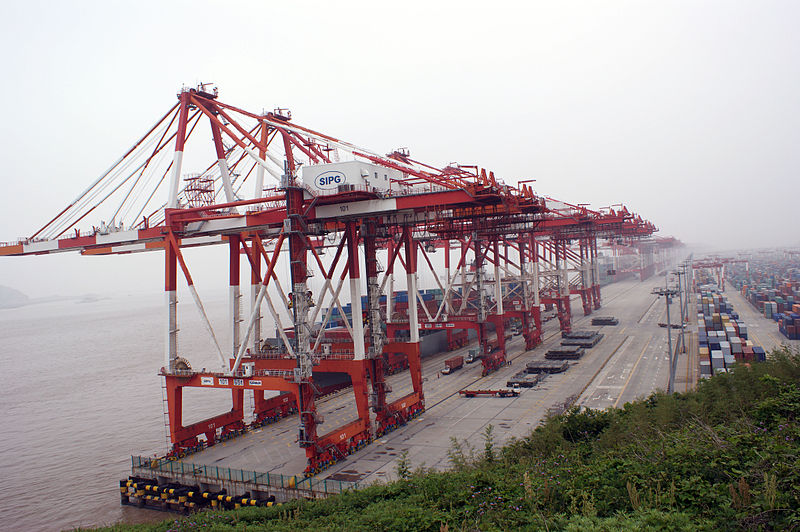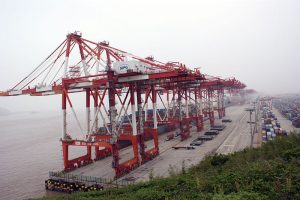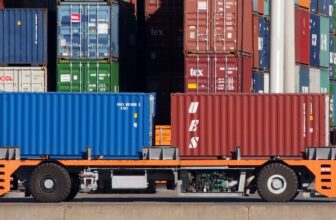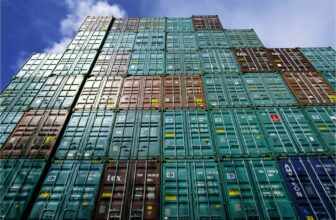

Picture of Port Yangshan by Bruno Corpet
Shippers were worried about potential delays or disruptions that April first’s carrier alliance reshuffle might bring. It turns out, those fears were well founded.
Major congestion is happening at Yangshan Port in Shanghai, largely due to the launch of the new carrier alliances.
Yangshan Port makes up part of the Port of Shanghai, which has held the distinction of the world’s busiest port by TEU volume for many years.
It is not the carrier alliances alone that have caused the major congestion at the port. The weather is certainly playing its role too. Bruce Gain reports in American Shipper:
Bad weather and shrinking capacity following a recent realignment of shipping alliances have created a perfect storm of port congestion that has caused a virtual gridlock in traffic at the port of Yangshan in China.
Gridlock is the last thing shippers want to hear when talking about ports. Unfortunately, the congestion at the Port of Yangshan is real, and shippers need to hear about it.
Many would call the bad weather, with thick fog hindering visibility, the main culprit of the congestion. Certainly, carriers are putting blame there rather than on themselves. In the American Shipper article quoted above, Maersk confirms that it has had vessels impacted by the congestion that the company’s spokesman said is “due to seasonal bad weather.”
It’s no surprise carriers would not name themselves as a cause of the congestion. However, other industry professionals put the blame squarely on the carriers. Bruce Gain’s article shares:
In addition to the more immediate impacts of the fog, rampant overbooking by carriers in the wake of newly restructured vessel sharing alliances is at the root of the massive delays at the port, Nicolas Vittori, the overseas network manager for France-based Setcargo, told American Shipper.
“Carriers are overbooking vessels and continue to accept reservations,” Vittori said. “Meanwhile, containers Chinese exporters deliver are left stranded at the port without being loaded onto ships.”
Jason Jiang, reporting in Splash 24/7, gives some details of the congestion happening in Shanghai:
… the congestion has caused delays in both ships calling at Yangshan Port’s Shengdong container terminal and Guandong container terminal.
Major lines have all sent notices to their clients to reschedule the services and Maersk line has even switched four ship callings between Apr 19 to April 27 from Yangshan Port to Waigaoqiao Port. K Line and NYK also delayed the sailing date of some of their containerships at Yangshan Port.
Shippers in both Asia-Europe and Asia-U.S. trade are being impacted by this congestion.
Steven Chiu from Seamaster Global emailed Universal Cargo Monday in regard to Shanghai Yangshan congestion and heavy backlog, saying that “carriers accepted 25% booking over their capacity” and “it will impact all vessel calling Shanghai Yangshan terminal (75% TP trade capacity impacted).”
Obviously the terminal and Port of Yangshan operators are working on this congestion problem, but they are not able to give any sort of timetable for clearing the congestion, as can be noted from both the American Shipper and Splash 24/7 articles.
U.S. shippers are familiar with the fact that severe congestion at ports can take a long time to clear up after experiencing the effects of such congestion at West Coast ports during and after the contentious 2014-15 contract negotiations between the Pacific Maritime Association (PMA) and International Longshore & Warehouse Union (ILWU).
Discover more from reviewer4you.com
Subscribe to get the latest posts to your email.






